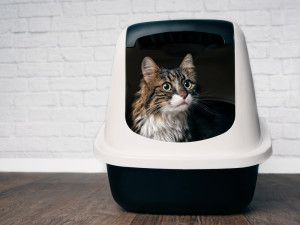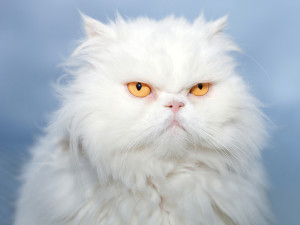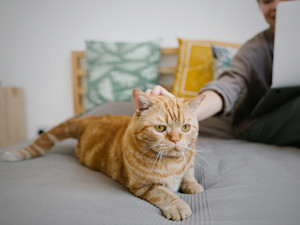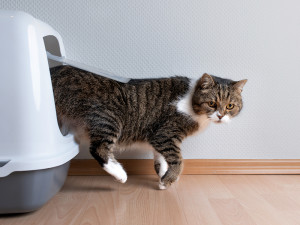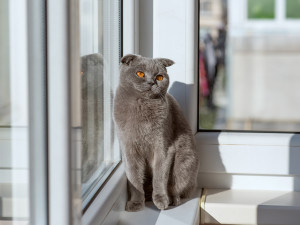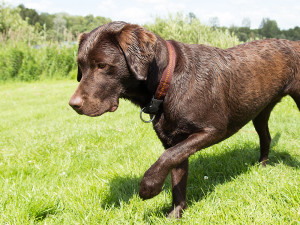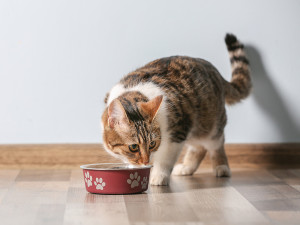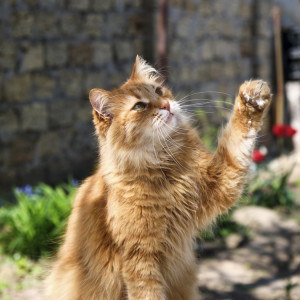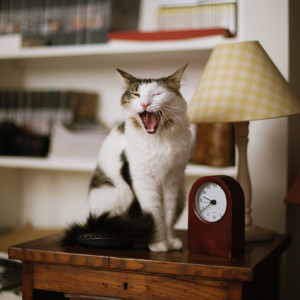Is Your Cat Full of Sh*t?
Seriously, though—here’s how to deal with cat constipation.
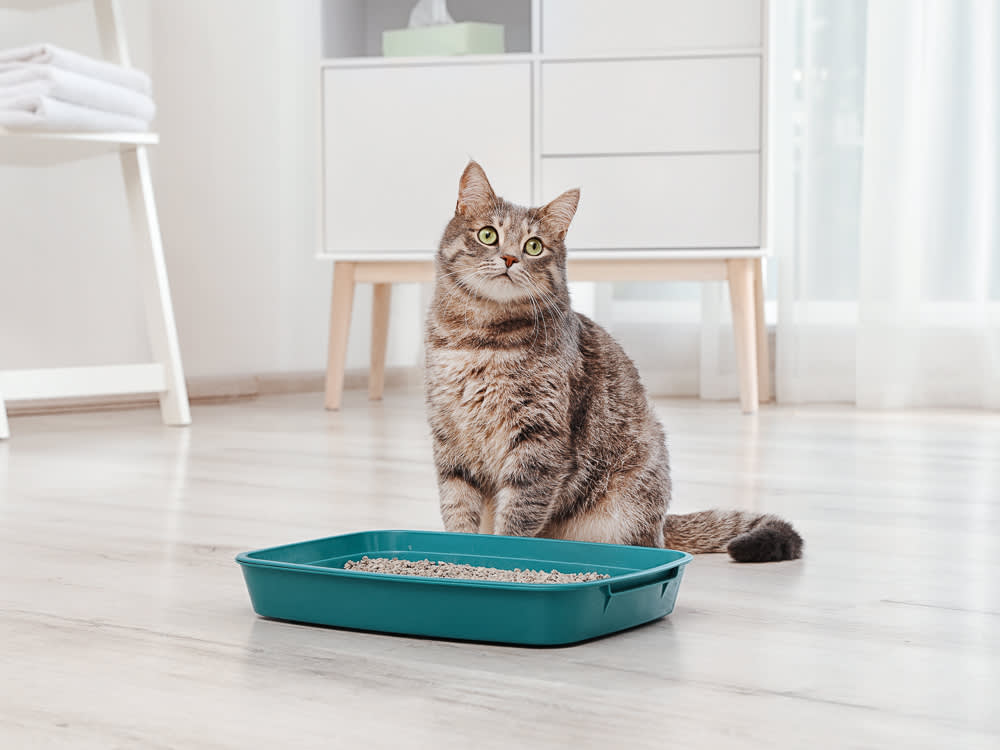
share article
Litter box issues can be the bane of kitty existence. As you know, your cat is very...particular. The litter box can be too dirty, too dusty, too inconvenient, or maybe shared with their mortal enemy. There’s a lot that can go wrong in there, which is why it’s a red flag when your cat’s litter box habits change. Worry not — here’s how to help a constipated cat.
Symptoms of cat constipation
A constipated cat has difficulty pooping, hardly ever poops, or stops pooping completely. Common symptoms include posturing and straining inside or outside of the litter box while only producing little or no stool. Vocalization, vomitingopens in a new tab, poor appetiteopens in a new tab, or abdominal pain can also be seen in constipated cats.
A side note about straining in the litter box — cats can strain in the litter box when they are having difficulty defecating or urinating. If your cat is straining to defecate, they require treatment but can often wait until you schedule an appointment with your veterinarian in the very near future. But if your cat is unable to urinate, they need medical attention urgently. Check the litter box closely to ensure that your cat has urinated recently. If no urine is coming out (especially in male kitties), get them to the vet ASAP.
Causes of constipation in cats
Dehydration
Dehydration commonly develops when a cat is not drinking enough water or loses fluid from vomiting. Underlying health issues, such as diabetes mellitus or kidney disease can increase urine production and contribute to fluid loss. When the body doesn’t have enough water, it will try to pull extra water from the colon, leading to dry, hard stool that is difficult to pass.
Orthopedic pain
Just like dogs and people, cats can develop arthritisopens in a new tab as they age. Older cats or cats with a history of a traumatic injury can have hip or lower back pain that makes posturing to defecate uncomfortable. For some cats, simply getting into the litter box presents a challenge, especially for senior cats with stiff joints.
Litter box anxiety
Cats often steer clear of litter boxesopens in a new tab that are dirty, difficult to access, or near people or pets who cause them anxiety. Some cats need peace and quiet during their bathroom trips, so a litter box next to a running washer or dryer may stress them out. Holding onto stool for too long increases the risk of constipation.
Other causes
Tumors or foreign material can cause physical obstructions that hinder the passage of stool. Certain medications or recent anesthesia can slow GI motility, leading to constipation. Tailless cat breeds, such as Manx cats, are at increased risk for congenital problems with the nerves of the colon. These cats often develop chronic issues with constipation or fecal incontinence.
Treatment for constipated cats
The treatment for constipation depends on the severity. Restoring hydration is an essential first step in treating constipation. Strategies may include feeding canned food to increase water intake, subcutaneous fluid therapy, or hospitalization for IV fluid therapy.
The next step is getting some of the poop out of your cat. This typically involves an enema or two (or 10) and time to allow your cat to have a bowel movement on their own. While using an over-the-counter enema at home may seem like a good idea, these should be avoided since many are toxic to cats. If enemas don’t work, your veterinarian will manually remove the hard, dry stool to help get things moving.
This procedure is called deobstipation. No cat appreciates this process, so it commonly requires sedation or anesthesia. Don’t try this at home, not that you’d even want to. Your veterinarian may also prescribe a laxative or recommend a psyllium-rich diet to help with colonic motility — anything to keep things moving.
Long-term effects of constipation in cats
A cat who has had an episode of constipation is at increased risk for developing future episodes. A colon that is repeatedly stretched to its max can lose its ability to contract normally. Kitties who experience recurrent bouts of constipation or have their constipation go untreated can become obstipated — which occurs when constipation is so severe that a cat is completely unable to pass stool. Stool continues to accumulate and harden, which leads to megacolon (yes, this is a medical term). Megacolon is irreversible and requires aggressive treatment and sometimes even surgical intervention. If you’re feeling brave, perform an image search for “feline megacolon.” It’s the worst of the worst (you’ve been warned).
Prevention of cat constipation
Encourage your cat to drink by providing easily accessible fresh wateropens in a new tab. Kitty drinking fountains can increase water intake in cats who prefer flowing water. Minimize the stress associated with litter box visits by providing clean, easily accessible litter boxes that are comfortable for your cat to use. Ideally, have at least one litter box per cat in the household, located in an area with some privacy.
Encourage your cat to be activeopens in a new tab, as sedentary cats are more likely to become constipated. Keep longhaired cats well-groomed to prevent constipation from hairballsopens in a new tab or matted fur under the tail. Discuss switching to a fiber-rich dietopens in a new tab or adding a fiber supplementopens in a new tab with your veterinarian before starting. For some cats with obstipation, extra fiber is not the answer. Discuss chronic pain management with your veterinarian if your cat has arthritis or chronic pain from a previous injury.

Dr. Alycia Washington, DVM, MS
Alycia Washington, DVM, is a small animal emergency veterinarian based in North Carolina. She works as a relief veterinarianopens in a new tab and provides services to numerous emergency and specialty hospitals. Dr. Washington is also a children’s book author and freelance writer with a focus on veterinary medicine. She has a special fondness for turtles, honey bees, and penguins — none of which she treats. In her free time, Dr. Washington enjoys travel, good food, and good enough coffee.
Related articles
![cat coming out of litter box]() opens in a new tab
opens in a new tabWhat to Do When Your Cat Refuses to Be (Litter) Boxed In
A cat behaviorist explains why they are so particular about where they pop a squat.
![Uncomfortable looking gray cat sitting on a window sill]() opens in a new tab
opens in a new tabShould Your Cat Go to the ER?
Here are six good reasons to haul tail to the emergency room.
![Brown Labrador lifting front leg]() opens in a new tab
opens in a new tabHow to Get a Head Start on Your Pet’s Health
Spot lumps, limps, and lethargy early on.
![cat eating sensitive stomach food for cats]() opens in a new tab
opens in a new tabDo Cat Foods For Sensitive Stomachs Really Help?
Dr. Bruce Kornreich explains why going this route isn’t always the answer.
- opens in a new tab
Your Cat Is Limping. Now What?
When it’s no big deal and when you should worry.
![White-and-brown cat sitting on a side table by a lamp with their mouth open, gagging]() opens in a new tab
opens in a new tabYour Cat Is Gagging. Should You Panic?
It’s not always an emergency — but it could be.
